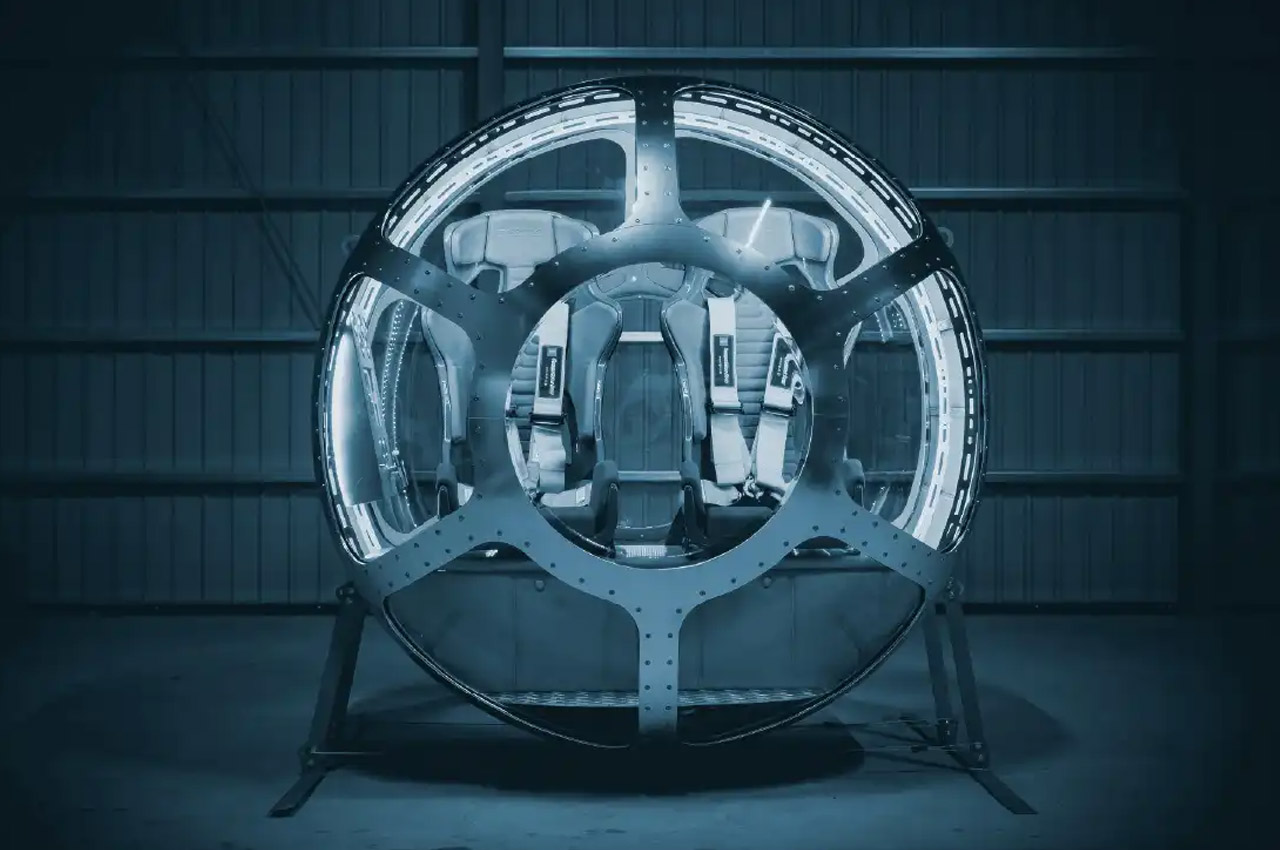We’ve still got some time to go before commercial space tourism goes mainstream, and the early birds taking up the initiative will reap the maximum benefit of client accusation.
SpaceX, Blue Origin and Virgin Galactic have already planted a firm foot in the space tourism industry, but their packages are only within reach of the ultra-rich. Not to forget the amount of training and acclimatization it’ll require to stamp the ticket beyond the stratosphere.
Designer: Iwaya Giken


Ambitious start-up Iwaya Giken, based in Sapporo, northern Japan wants to make space tourism accessible for everyone, and “democratize space” with a two-seater cabin and a balloon that’ll rise 15 miles above the ground. The Open Univercse Project’s cabin will have one pilot and a passenger, without the need for any special training since it’s not a rocket or spaceplane.
They’ve been working on this project ever since 2012, and now it has met fruition. The attached balloon filled with helium gas will make the drum-shaped cabin (measuring 1.5 meters) rise up in the air. It’ll take off from Hokkaido, and take around two hours to complete the ascend. Then stay there for an hour to view the mesmerizing curvature of the planet and the celestial void, before descending for one-hour to return home.
Iwaya revealed the capsule cabin at a press event in Tokyo, hinting to get down the initial boarding price tag down from 24 million yen ($180,000) to somewhere in the five-figure region. They’ll have to do so since Arizona-based World View Enterprises is also developing a stratospheric balloon tour for a price tag of around $50,000 per person.
Their cabin is more spacious and the journey will last around 6-12 hours. Another high-end option by Space Perspective will transport passengers to the stratosphere for $125,000 per person in comfy luxury.
The company is accepting applications until August end for the space cabin ride slated for to take flight early next year. The first five passengers will be announced in October 2023, and the five flights will be weeks apart, subject to weather conditions.
